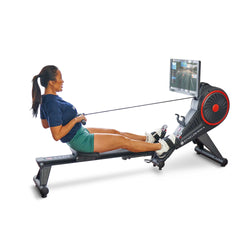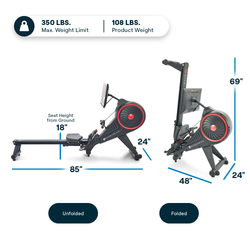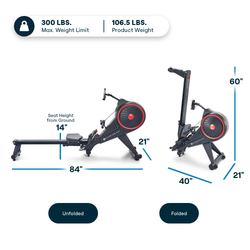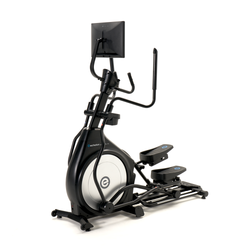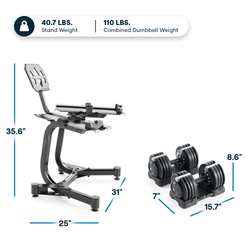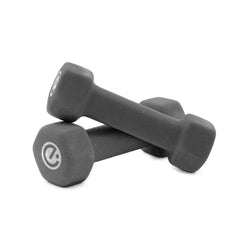Strength Training 101: Essential Tips and Techniques

Strength training is a key part of any workout routine. Not only does it help you build strength, it also helps to increase your endurance and balance. Whether you’re a beginner or a seasoned gym rat, there are several important tips and techniques that you should know to get the most out of your strength training routine. In this blog post, we’ll go over the basics of strength training, as well as provide essential tips and techniques to help you maximize your workouts. So, if you’re ready to take your training to the next level, let’s get started!
Benefits of Strength Training
Strength training is a crucial component of any well-rounded fitness routine, providing numerous benefits for individuals of all fitness levels. One of the primary benefits of strength training is increased muscle strength and tone. By regularly challenging your muscles through resistance exercises, you can build lean muscle mass, which not only improves your overall appearance but also enhances your physical performance in everyday activities and sports.
Strength training also plays a key role in boosting metabolism and aiding weight management. As muscles are metabolically active tissues, the more muscle you have, the more calories you burn at rest. This means that strength training can help you maintain a healthy weight and even assist in weight loss.
Additionally, strength training has been shown to have significant benefits for bone health. By placing stress on the bones during resistance exercises, strength training can increase bone density and reduce the risk of osteoporosis and fractures.
Furthermore, strength training offers various functional benefits, such as improved balance, stability, and posture. Strengthening your muscles helps support your joints, preventing injuries and promoting overall joint health.
Lastly, strength training can have a positive impact on mental health and well-being. Regular strength training has been linked to improved mood, reduced symptoms of anxiety and depression, and increased self-confidence.
Types of Strength Training
Strength training involves many different types of exercises that can be done to improve muscle strength, endurance, and size. The types of strength training exercises include compound exercises, isolation exercises, and bodyweight exercises.
Compound exercises target multiple muscle groups at once, making them ideal for gaining overall strength. Examples of compound exercises include the bench press, squats, and deadlifts. Isolation exercises, on the other hand, target specific muscle groups and are great for muscle growth. Examples of isolation exercises include bicep curls, tricep extensions, and calf raises.
Bodyweight exercises are exercises that use your body weight as resistance. These exercises are great for building overall strength and can be done anywhere without any equipment. Examples of bodyweight exercises include push-ups, pull-ups, and squats.
It's important to incorporate a variety of different strength training exercises into your workout routine to ensure that all of your muscles are being targeted and that you're seeing maximum results. A mix of compound, isolation, and bodyweight exercises can help you achieve your strength training goals.
Essential Strength Training Equipment
Strength training is a form of exercise that requires minimal equipment. However, there are a few essential pieces of equipment that will greatly enhance your strength training experience and help you achieve your fitness goals. Here are some essential strength training equipment to consider:
1. Dumbbells: Dumbbells are versatile and can be used to perform a wide variety of strength training exercises. They are available in different weights, so you can gradually increase your resistance as you get stronger.
2. Barbells: Barbells are long metal bars that can be loaded with weight plates. They are great for compound exercises such as squats, deadlifts, and bench press.
3. Resistance bands: Resistance bands are lightweight, portable, and affordable. They can be used for a variety of exercises, including pull-ups, push-ups, and squats.
4. Stability ball: A stability ball can be used for a variety of core exercises such as planks, crunches, and leg curls. It can also be used as a substitute for a bench for exercises like dumbbell bench press.
5. Kettlebells: Kettlebells are an excellent tool for functional training and building strength and endurance. They are especially effective for compound exercises like swings, snatches, and Turkish get-ups.
Investing in some essential strength training equipment can make your workouts more efficient and effective. Plus, it's an investment in your health and fitness.
Basic Strength Training Exercises
When starting out with strength training, it's important to begin with basic exercises that target major muscle groups. These exercises will help build a solid foundation of strength and prepare you for more advanced movements. Here are some basic strength training exercises to include in your routine:
1. Squats: Squats are a compound exercise that target the lower body, including the quadriceps, hamstrings, and glutes. They help build leg strength and improve overall stability.
2. Push-ups: Push-ups are a great upper body exercise that targets the chest, shoulders, and triceps. They can be modified to suit your fitness level, making them suitable for beginners and advanced lifters alike.
3. Deadlifts: Deadlifts are a full-body exercise that primarily target the hamstrings, glutes, and lower back. They help develop overall strength and improve posture.
4. Lunges: Lunges are another lower body exercise that targets the quadriceps, hamstrings, and glutes. They also help improve balance and coordination.
5. Overhead press: The overhead press is a compound exercise that targets the shoulders, triceps, and upper back. It helps build upper body strength and improves shoulder stability.
These basic exercises should be performed with proper form and technique to maximize results and prevent injuries. It's important to start with lighter weights and gradually increase the resistance as you become more comfortable and stronger. Remember to always warm up before each workout and listen to your body, taking rest days as needed. Incorporating these basic exercises into your strength training routine will set you on the path to building a stronger, fitter body.
Progressive Overload in Strength Training
When you first start strength training, it’s common to see quick improvements in your strength and endurance. However, over time, those improvements may begin to slow down and it can be tempting to stick to the same weights and exercises you’ve been doing. But to continue to see progress, you need to challenge your muscles in new ways. This is where progressive overload comes in.
Progressive overload simply means gradually increasing the demands placed on your muscles over time. You can do this in several ways, such as increasing the weight you lift, increasing the number of sets or reps you perform, or decreasing the amount of rest time between sets. The key is to make sure you are consistently challenging your muscles to adapt and get stronger.
However, it’s important to remember that progressive overload should be done gradually and safely. If you try to increase the weight too quickly or perform too many reps too soon, you increase the risk of injury. Instead, aim for small, incremental increases in weight or volume, and make sure you are using proper form and technique at all times.
By incorporating progressive overload into your strength training routine, you can continue to see improvements in your strength, endurance, and overall fitness. So don’t be afraid to challenge yourself and push your limits – your muscles will thank you for it!
Proper Technique and Form in Strength Training
Proper technique and form are essential in strength training to ensure maximum effectiveness and prevent injury. Here are some key tips to help you maintain proper technique and form during your workouts.
First and foremost, it's important to start with a warm-up to prepare your muscles and joints for the exercises. This can include dynamic stretching, light cardio, or even a few warm-up sets with lighter weights.
When performing each exercise, focus on maintaining a neutral spine and engaging the appropriate muscles. This means avoiding rounding or arching your back and keeping your core tight. It's also important to breathe properly, exhaling during the exertion phase of the exercise and inhaling during the relaxation phase.
Pay attention to your range of motion and avoid using momentum to complete the movement. Each repetition should be controlled and deliberate, with a full range of motion for the targeted muscles. This ensures that you're getting the most out of each exercise and targeting the right muscles.
Additionally, be mindful of your grip and stance. Use a grip that feels comfortable and secure, and maintain a stable stance with your feet firmly planted on the ground. This will provide a solid foundation for the exercises and help you maintain balance and control.
Lastly, it's crucial to start with lighter weights and gradually increase the load as your strength improves. This progressive overload principle not only helps you build strength but also allows you to focus on maintaining proper technique and form.
By following these tips, you'll be well on your way to performing strength training exercises with proper technique and form. Remember, it's always better to prioritize quality over quantity, so take the time to perfect your form and reap the benefits of strength training in a safe and effective manner.
Recovery and Rest in Strength Training
When it comes to strength training, recovery and rest are just as important as the actual workouts themselves. Proper recovery and rest can help prevent injuries, reduce muscle soreness, and promote overall strength and muscle growth.
After a strength training session, it's important to allow your muscles time to recover. This means taking a break from strength training exercises and engaging in activities such as foam rolling, stretching, and light cardio. Adequate rest is also crucial for muscle recovery and growth. Aim to get at least 7-8 hours of sleep per night, as this is when the body repairs and rebuilds muscles.
Proper nutrition also plays a key role in recovery and rest. Eating a balanced diet that includes protein, carbohydrates, and healthy fats can help support muscle recovery and growth. In addition, staying hydrated is crucial for overall health and can help prevent muscle fatigue and soreness.
Remember, rest days are just as important as workout days. Allow yourself time to rest and recover between strength training sessions to achieve optimal results and avoid burnout.
Nutrition for Strength Training
When it comes to strength training, proper nutrition plays a vital role in achieving optimal results. Your diet directly affects your energy levels, muscle recovery, and overall performance. Here are some essential nutrition tips for strength training.
First and foremost, it's crucial to consume enough protein. Protein is the building block of muscle, and without an adequate intake, your muscles won't have the necessary materials to repair and grow. Aim to consume 0.8-1 gram of protein per pound of bodyweight daily. Good sources of protein include lean meats, fish, poultry, eggs, dairy products, and plant-based proteins like tofu and legumes.
Carbohydrates are another important macronutrient for strength training. Carbs provide energy for your workouts and help replenish glycogen stores in your muscles. Opt for complex carbohydrates like whole grains, fruits, and vegetables, which provide sustained energy throughout the day.
Don't forget about healthy fats. While fats are often demonized, they are essential for hormone production, joint health, and overall well-being. Include sources of healthy fats like avocados, nuts, seeds, and olive oil in your diet.
Hydration is often overlooked but is crucial for optimal performance and recovery. Aim to drink at least 8-10 glasses of water daily and increase your intake during intense workouts.
Lastly, timing your meals and snacks around your training sessions can enhance your performance. Consuming a balanced meal with a mix of carbohydrates, protein, and healthy fats about 1-2 hours before your workout can provide sustained energy. After your workout, have a post-workout meal or snack within 30 minutes to replenish glycogen stores and kickstart the muscle recovery process.
In summary, proper nutrition is essential for maximizing the benefits of strength training. Focus on consuming adequate protein, complex carbohydrates, healthy fats, and staying hydrated. With the right nutrition plan, you'll fuel your body for success and achieve your strength training goals.
Common Mistakes to Avoid in Strength Training
Strength training is a highly effective way to build muscle, increase strength, and improve overall fitness. However, like any form of exercise, it's important to approach strength training with caution and proper technique to avoid injury and maximize results. Here are some common mistakes to avoid when engaging in strength training:
1. Skipping Warm-up and Cool-down: Neglecting to warm up before a workout and cool down afterwards can lead to muscle strain and injury. Take the time to properly warm up your muscles with dynamic stretches and gradually increase the intensity of your workout. Likewise, don't forget to cool down and stretch to promote flexibility and prevent post-workout soreness.
2. Poor Technique and Form: One of the biggest mistakes in strength training is sacrificing proper technique for heavier weights. Using improper form not only reduces the effectiveness of the exercise but also increases the risk of injury. It's essential to focus on proper alignment, maintain control throughout the movement, and engage the correct muscles for each exercise. If you're unsure about proper form, consult a certified personal trainer.
3. Lifting Too Heavy, Too Soon: Many people make the mistake of attempting to lift heavy weights before they have built a solid foundation of strength. It's important to start with lighter weights and gradually increase the load as your muscles become stronger and more conditioned. Progressing too quickly can lead to strain and injury.
4. Neglecting Rest and Recovery: Rest and recovery are just as important as the actual workout when it comes to strength training. Muscles need time to repair and rebuild after intense training sessions. Overtraining can lead to muscle fatigue, increased risk of injury, and hinder progress. Aim for at least one or two days of rest each week and listen to your body when it needs a break.
5. Ignoring Nutrition: Strength training requires proper nutrition to fuel the muscles and support recovery. Consuming an adequate amount of protein, healthy fats, and carbohydrates is essential for muscle growth and repair. Additionally, staying hydrated is important to prevent muscle cramps and fatigue during workouts.
By avoiding these common mistakes and focusing on proper technique, gradual progression, and adequate rest and nutrition, you can ensure a safe and effective strength training routine that will help you reach your fitness goals.
Incorporating Strength Training into Your Fitness Routine
Strength training is a crucial component of any well-rounded fitness routine. It helps to build and tone muscles, increase bone density, and improve overall strength and stability. However, incorporating strength training into your fitness routine can seem intimidating, especially if you are new to it.
The key to successfully incorporating strength training is to start slow and gradually increase the intensity and duration of your workouts. Begin by incorporating one or two strength training sessions into your weekly routine, and gradually increase it as your body adapts and becomes stronger.
Another important aspect of incorporating strength training is to choose exercises that target different muscle groups. This will ensure that you are working your entire body and achieving balanced muscle development. Some essential strength training exercises to consider include squats, lunges, push-ups, and deadlifts.
Additionally, it is important to listen to your body and give it the rest and recovery it needs. Strength training can be demanding on your muscles, so it is crucial to allow for proper rest between sessions. Aim for at least 48 hours of rest between strength training sessions to give your muscles time to recover and rebuild.
Lastly, nutrition plays a vital role in strength training. Make sure to fuel your body with a balanced diet that includes lean proteins, carbohydrates, and healthy fats. Adequate protein intake is especially important for muscle repair and growth.
Incorporating strength training into your fitness routine may require some trial and error to find what works best for you. Be patient and persistent, and soon enough, you will begin to see the benefits of strength training in your overall fitness and strength levels.


